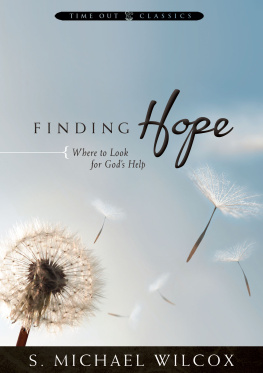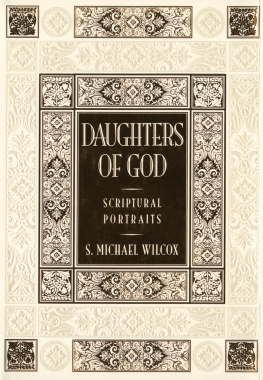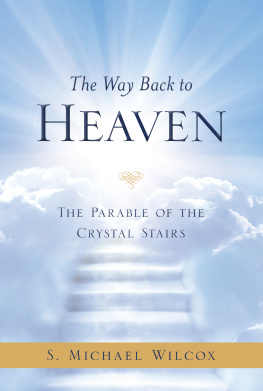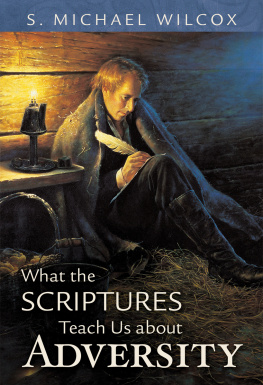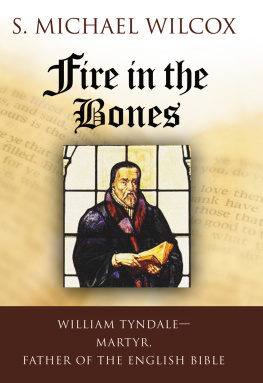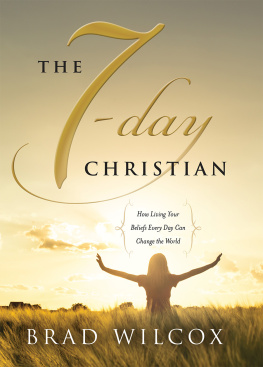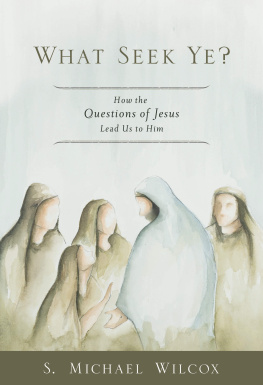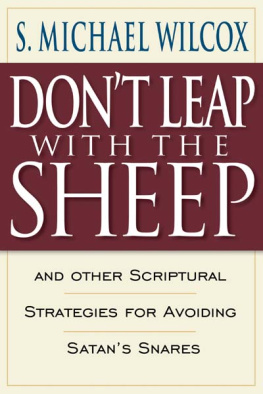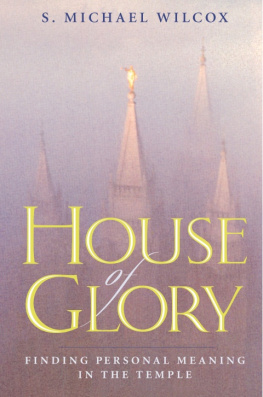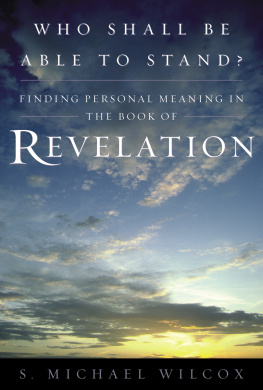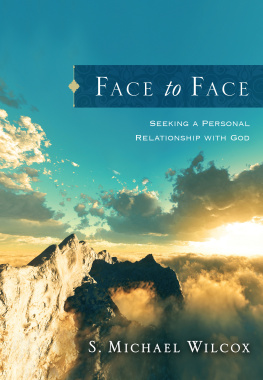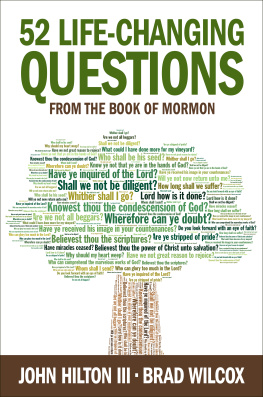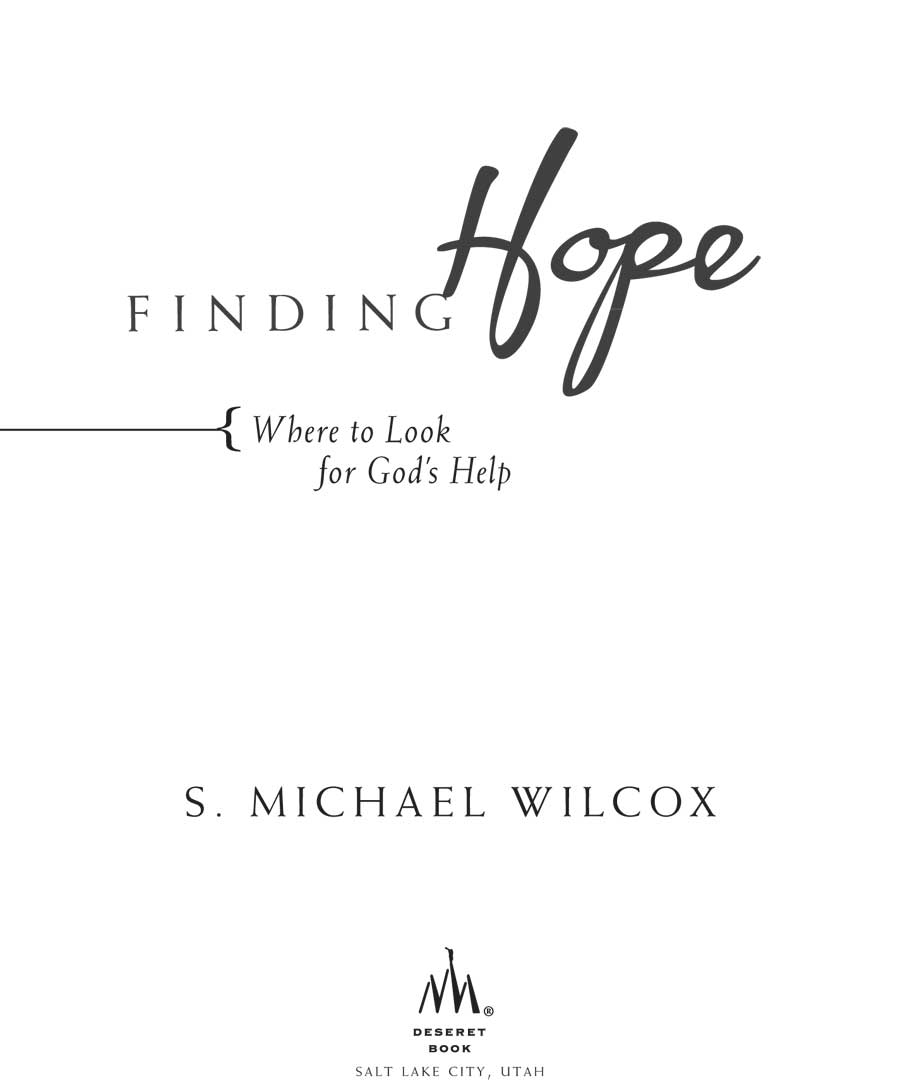2011 S. Michael Wilcox.
All rights reserved. No part of this book may be reproduced in any form or by any means without permission in writing from the publisher, Deseret Book Company, P.O. Box 30178, Salt Lake City Utah 30178. This work is not an official publication of The Church of Jesus Christ of Latter-day Saints. The views expressed herein are the responsibility of the author and do not necessarily represent the position of the Church or of Deseret Book. Deseret Book is a registered trademark of Deseret Book Company.
Library of Congress Cataloging-in-Publication Data
Wilcox, S. Michael, author.
Finding hope : where to look for Gods help / S. Michael Wilcox.
pages cm (A time out classic)
ISBN 978-1-60908-067-9 (hardbound : alk. paper)
1. HopeReligious aspectsChurch of Jesus Christ of Latter-day
Saints. 2. Christian lifeMormon authors. I. Title. II. Series: Time out classics.
BX8643.H67W54 2011
234'.25dc23 2011019749
Printed in Mexico
R. R. Donnelley, Reynosa, Mexico
10 9 8 7 6 5 4 3 2 1
In the Valley of Dry Bones
God spoke to the great prophets of the Old Testament in some rather unique ways, most of them deeply visual. Ezekiel had wonderful visions that would grasp his hearers imagination, causing them to pay attention and think profoundly. In one of those visions he saw a great valley of dry bones bleaching in the sun. Visualize that scene with me for just a moment. Before us is a wide valley, filled with bones as far as the eye can see in every direction. A great army or a mighty people have all died, and their bones lie exposed to the weather. Ezekiel stands in the midst of the valley, when the Lord enters the scene and causes Ezekiel to pass by [the bones] round about... and, lo, they were very dry (Ezekiel 37:12). After Ezekiel makes a circuit of the valley, the Lord addresses His prophet with a question: Son of man, can these bones live?
Ezekiel responds in a purely human way: O Lord God, thou knowest (Ezekiel 37:3). In other words, Why are you asking me?
The Lord then continues, Prophesy upon these bones, and say unto them, O ye dry bones,... I will cause breath to enter into you, and ye shall live (Ezekiel 37:45). Ezekiel prophesies, and the Lords words come true.
Ezekiel describes a quite dramatic moment, complete with sound. Now, along with our visualization, we need to listen and well hear a noise, and behold a shaking, and the bones came together, bone to his bone (Ezekiel 37:7). We can visualize this; we can hear itall those bones rattling and clacking together, the ribs lining up, the skulls reattaching. We see this great army of skeletons gathered there, but they need the clothing of flesh. While Ezekiel watches, Lo, the sinews and the flesh came up upon them, and the skin covered them above (Ezekiel 37:8). But there is still no life in them. Theyre just assembled there, waiting.
With that unbelievable question still fresh in our minds, Can these bones live? the Lord tells Ezekiel to prophesy again: Prophesy unto the wind, prophesy, son of man, and say to the wind, Thus saith the Lord God; Come from the four winds, O breath, and breathe upon these slain, that they may live (Ezekiel 37:9). And Ezekiel prophesies! Ezekiel calls the four winds. Let us see this moment in our imagination. The winds sweep down from the four cardinal points of the compass and pass through the lifeless men. Thenyou can hear itthat great army draws in breath and lives, and [stands] up upon their feet, an exceeding great army (Ezekiel 37:10).
What is the purpose of this remarkable vision? Is it a witness of the Resurrection? Perhaps the Lord has something else in mind. He teaches Ezekiel what his wonderful vision of the dry bones was about. It has a powerful meaning, necessary for all of our lives. The Lord says, Son of man, these bones are the whole house of Israel: behold, they say, Our bones are dried, and our hope is lost (Ezekiel 37:11; emphasis added).
The Lord desires for us to realize, through that powerful vision Ezekiel experienced, that though our hopes may be dead and dried and bleaching in the sun, we are to anticipate the breath of God. Then there will be a great noise and a shaking, and our hopes will come together again, stand up, and draw in breath. We will know that moment in our own lives when the great army stands and steps forward boldly into the future.
Let us explore some of what the Lord gives us in the scriptures so that we can have that moment of drawing in breath, then watching as our hopes rise into life. Much of this depends on us. It will happen if we only know where to look. Hope is a creation as well as a gift!
No Hope in the Dictionary
When I was notified of the 2010 Time Out for Women theme, Infinite Hope, it reminded me of an experience I had many years ago. I was preparing a talk on faith, hope, and charity. I decided I would start in the Bible Dictionary and see what I could find there. I searched for those three words alphabetically. I started with charity, looking up what the Bible Dictionary said about charity, and collected some scriptures on that theme. I found much that was helpful.
Then it was on to faith. I found good information and references about faith, which I searched and consequently harvested some wonderful ideas. Last, I turned to hope. What do you think I discovered? It wasnt there! Hope is not in the Bible Dictionary. I was amazed! Just to make sure it wasnt only my Bible Dictionary, I asked a friend, Would you please check your Bible and see if hope is in the Bible Dictionary? It wasnt in hers, either. I had to work a little to find stories and verses about hope around which I could construct my talk.
Perhaps this little experience is indicative of our lives. We have to look for hope! We have to create it! I went on a journey through the scriptures to find hope. I would like to share some of the stories that surfaced. They have helped me when my hopes are like lifeless bones drying in a wide valley, devoid of the breath of God.
Walls and Giants or Milk and Honey
Most often what you find hinges on where you look. Hope shines in many different directions. The first scripture story deals with finding hope by looking forward. In a forward focus we usually find renewed optimism. Yet even here we must choose what to see in the future. One of my favorite Old Testament stories is in the book of Numbers. When Moses and the children of Israel were preparing to enter the promised land, they sent twelve spies ahead into Canaan, a leader from each of the tribes, to search the land and report on what they saw. The spies traveled throughout Canaan for forty days, assessing, observing, and gathering information. When those twelve men came back, two different reports were given.
Joshua and Caleb, the two spies representing Ephraim and Judah, gave their report to the listening people, along with a visual aid. They came unto the brook of Eshcol, and cut down from thence a branch with one cluster of grapes, and they bare it between two upon a staff; and they brought of the pomegranates, and of the figs (Numbers 13:23). They described the land with a phrase that is now proverbial: And surely it floweth with milk and honey; and this is the fruit of it (Numbers 13:27). There, for all of Israel to see, hangs a large cluster of grapes. (In fact, the symbol of Israels tourist industry today is a depiction of Joshua and Caleb carrying a huge bunch of grapes on a pole between them.) These two spies saw the fruits of the land: the grapes and the pomegranates and the figs. It was the milk and honey they were focused on. Within that focus, hope, desire, and courage were born.

